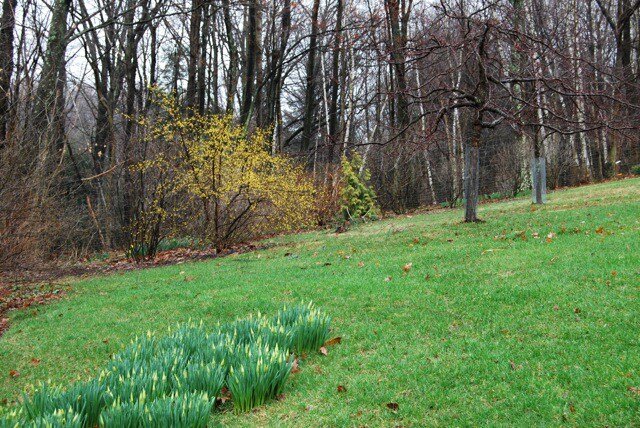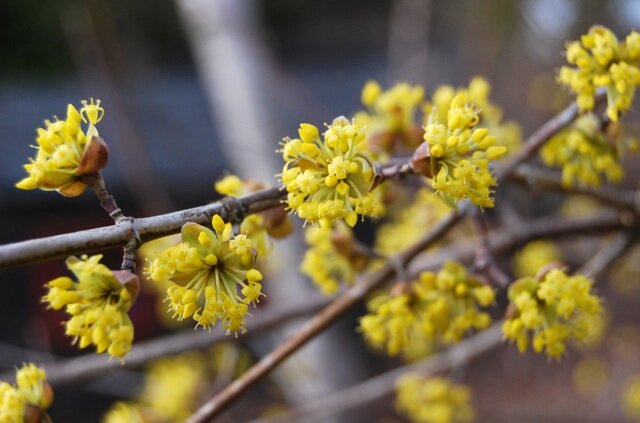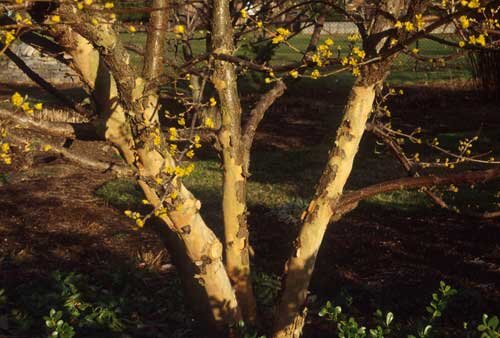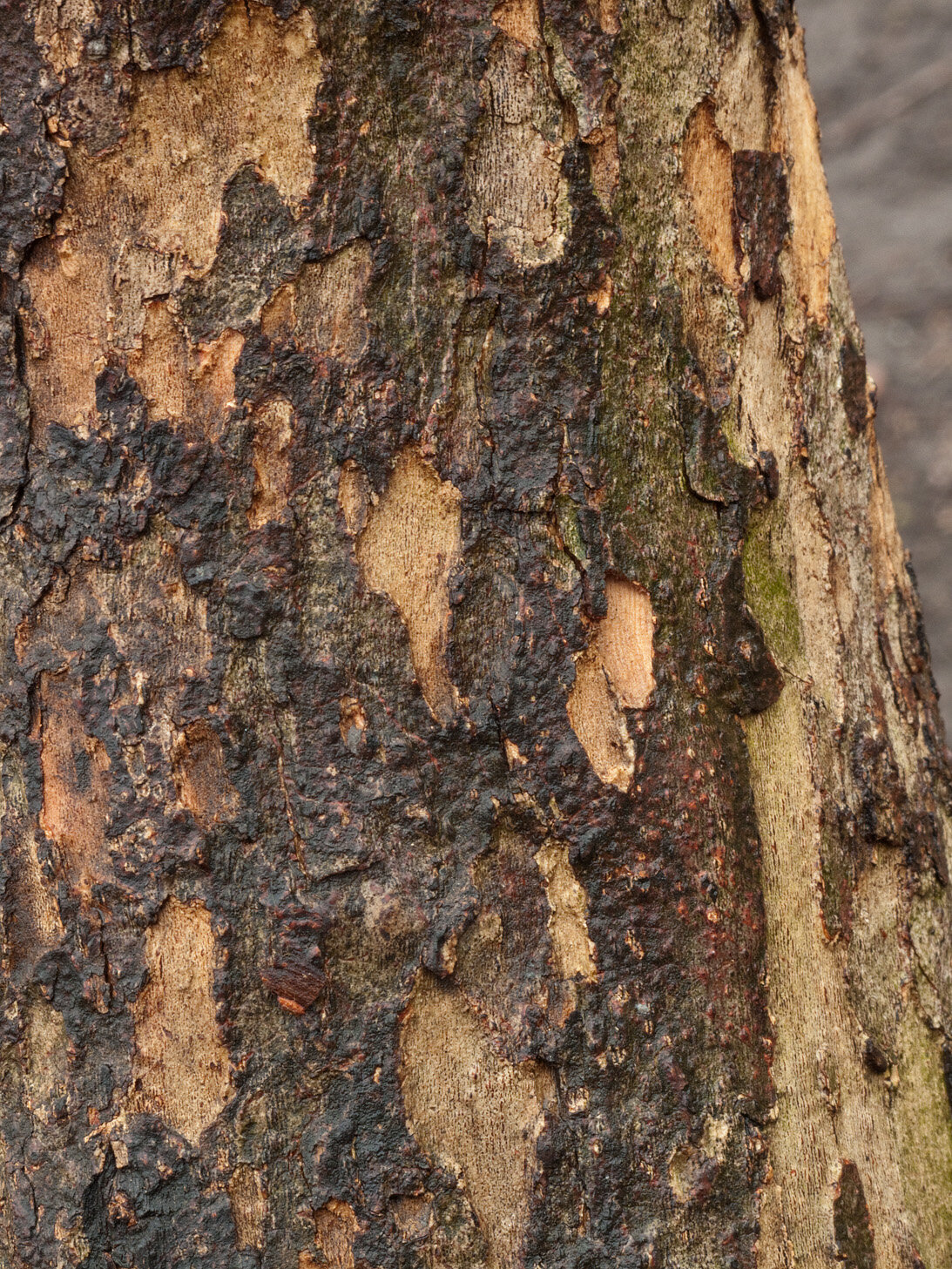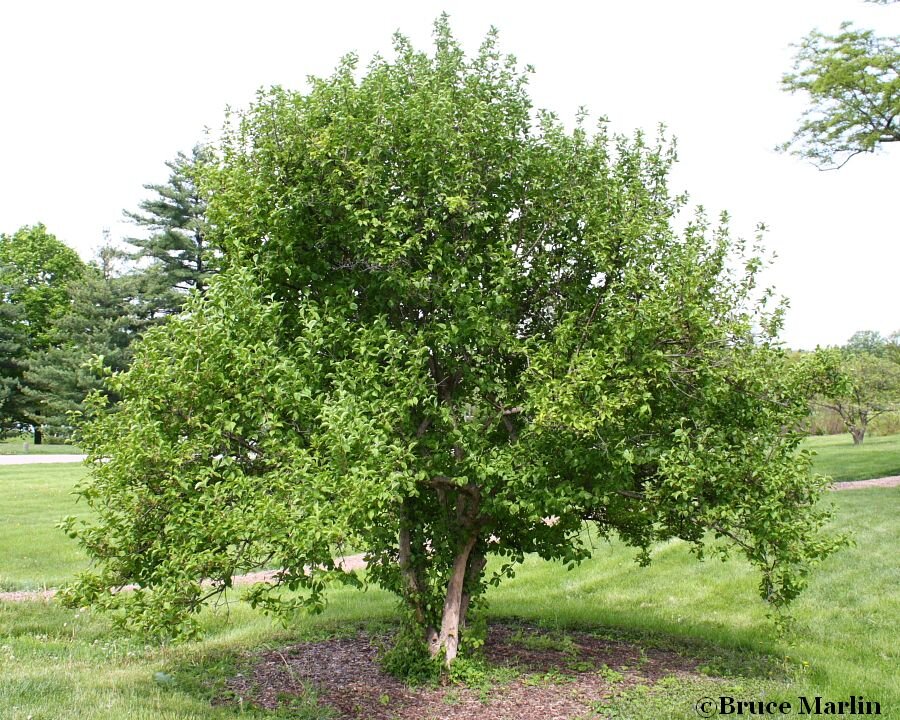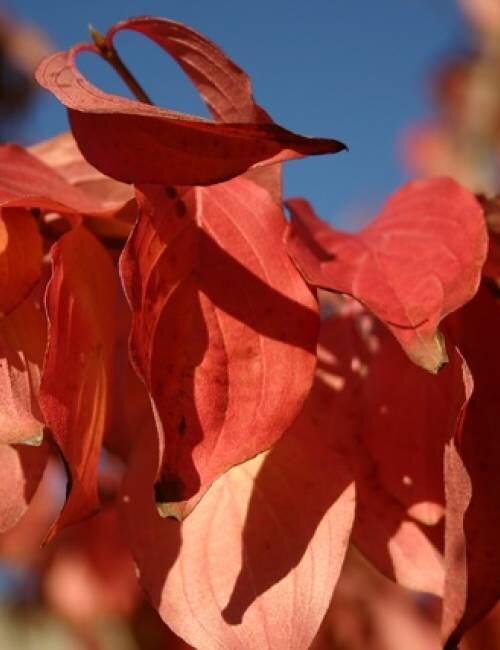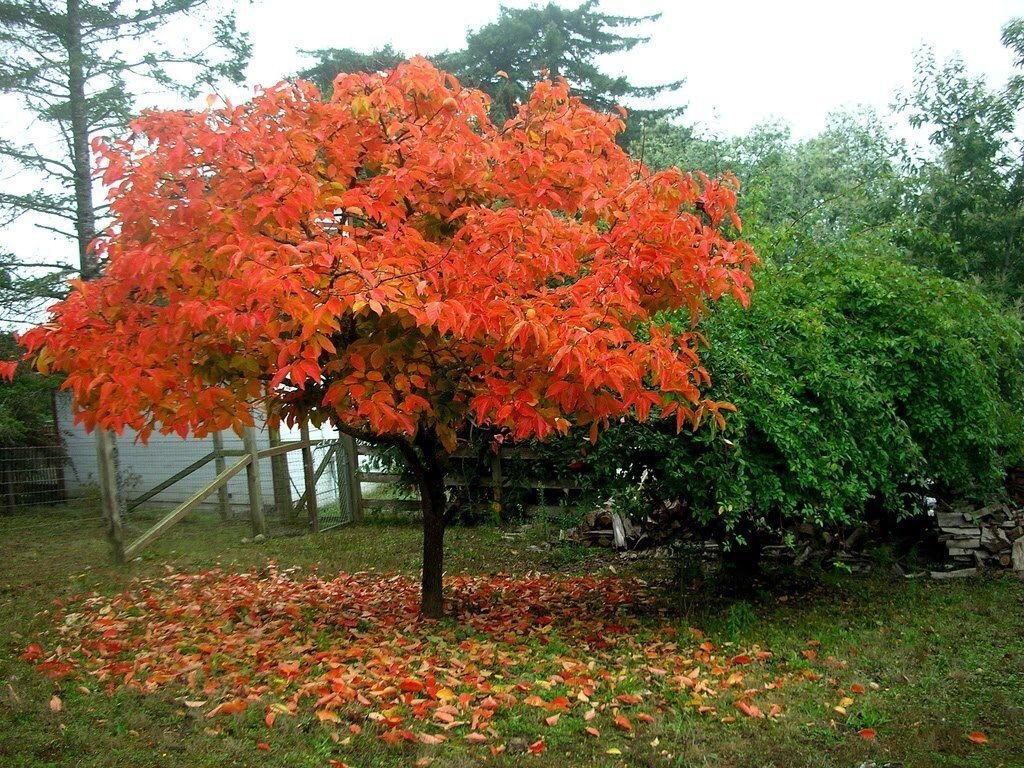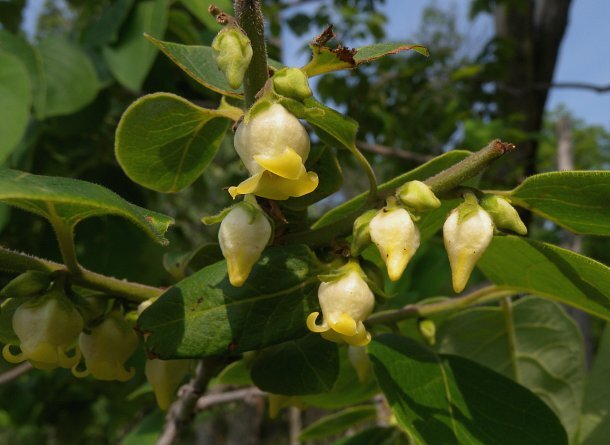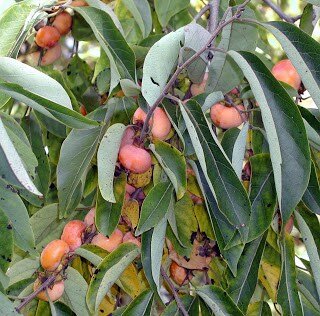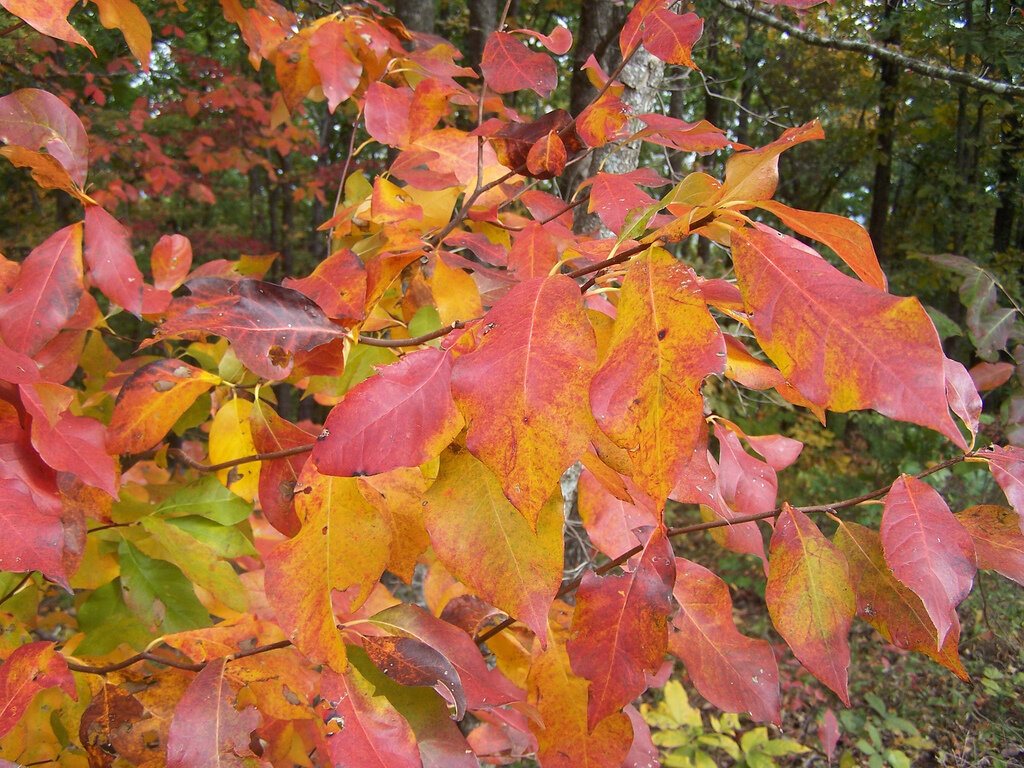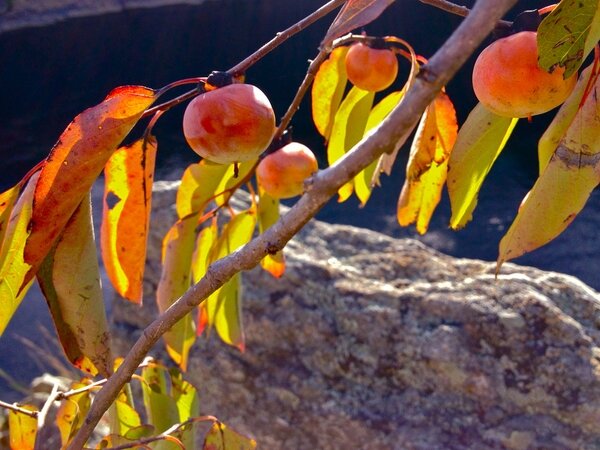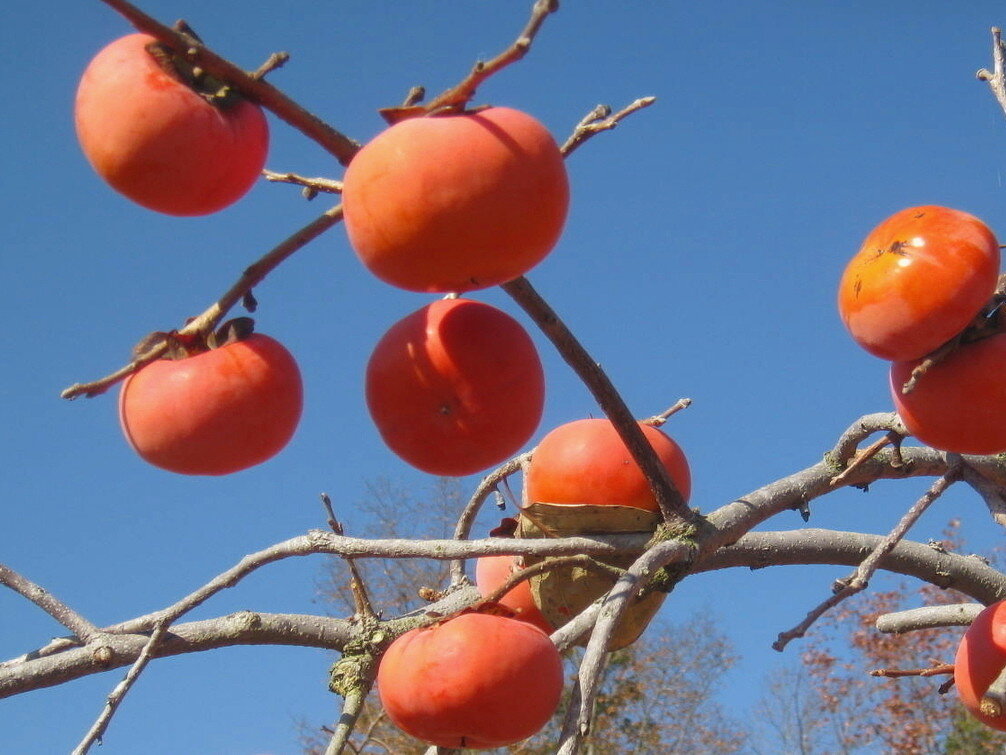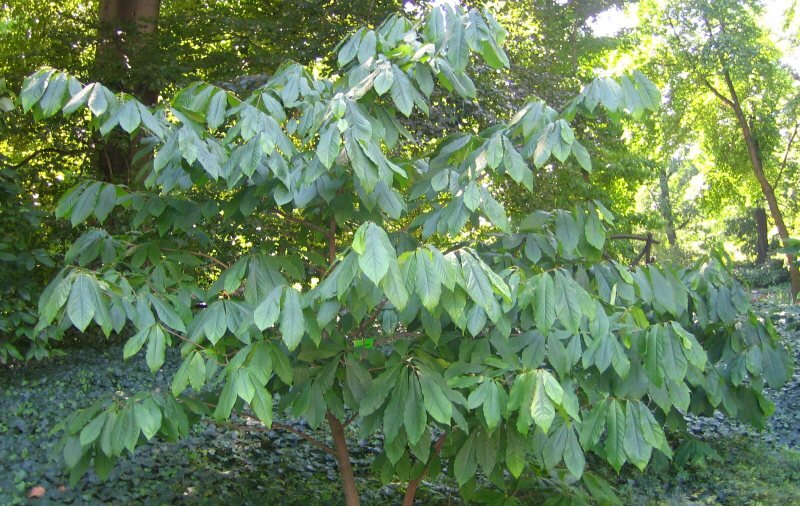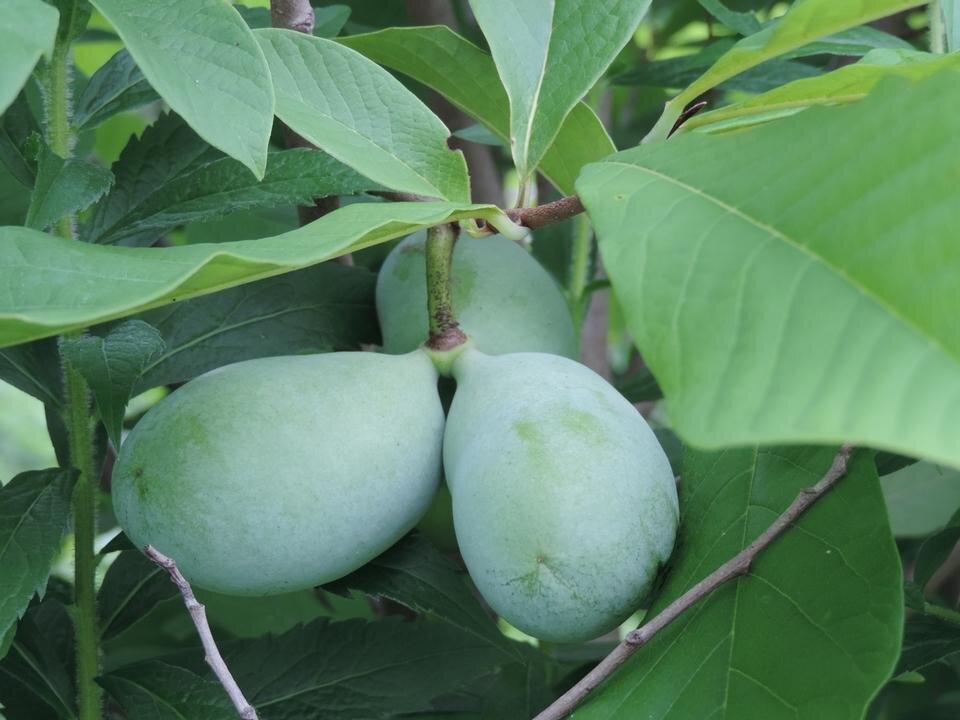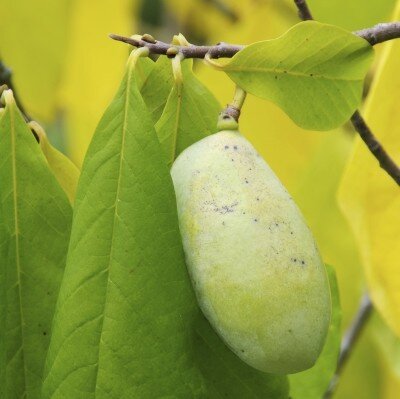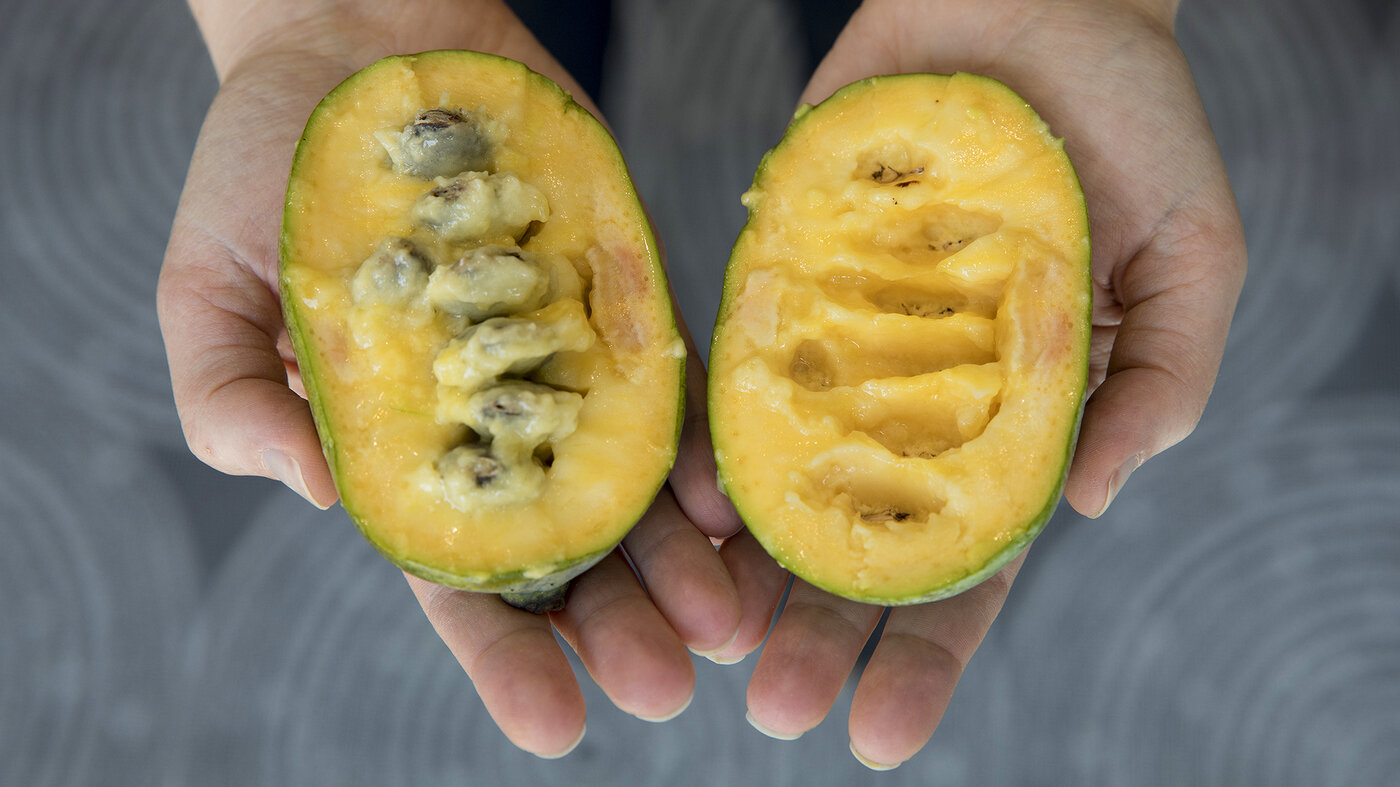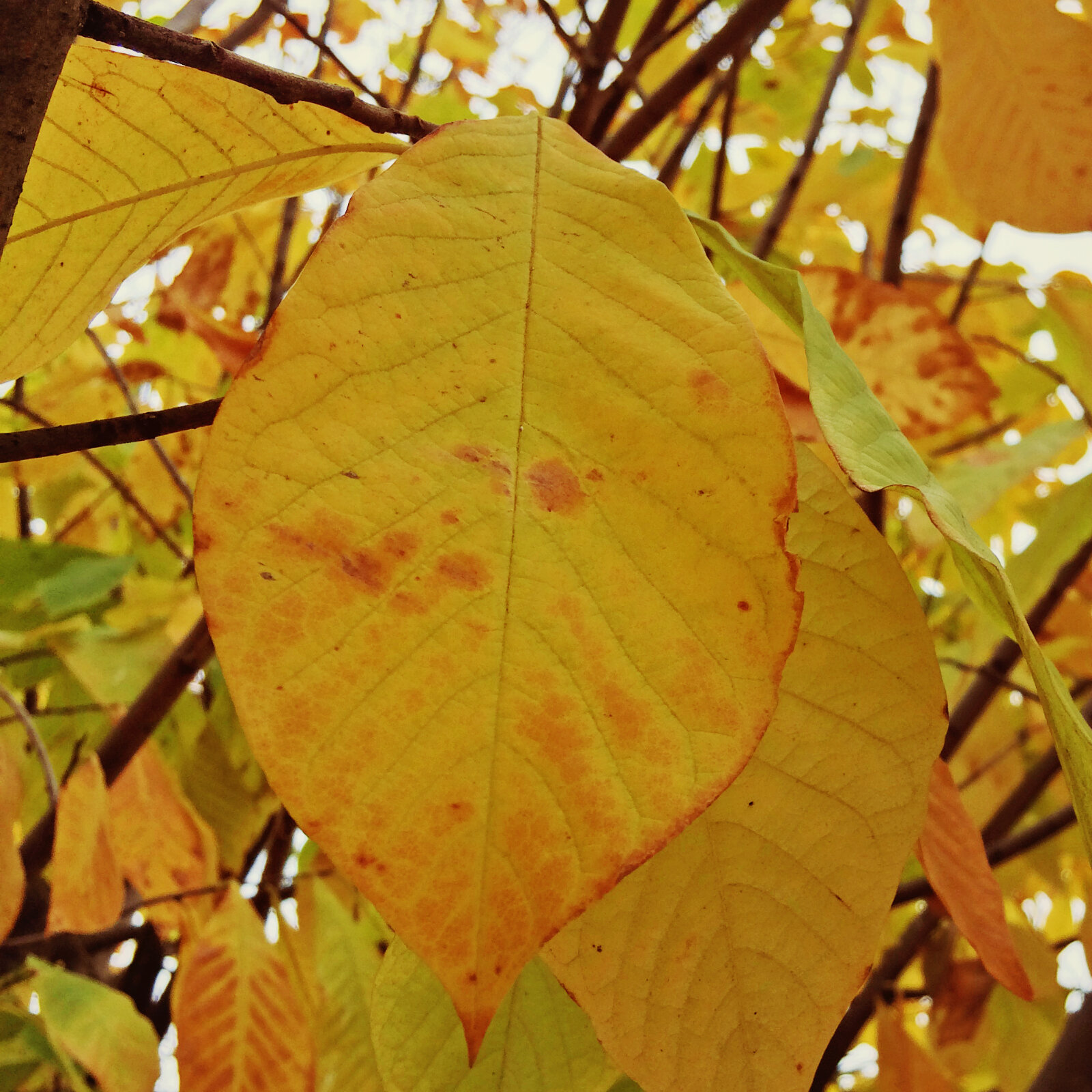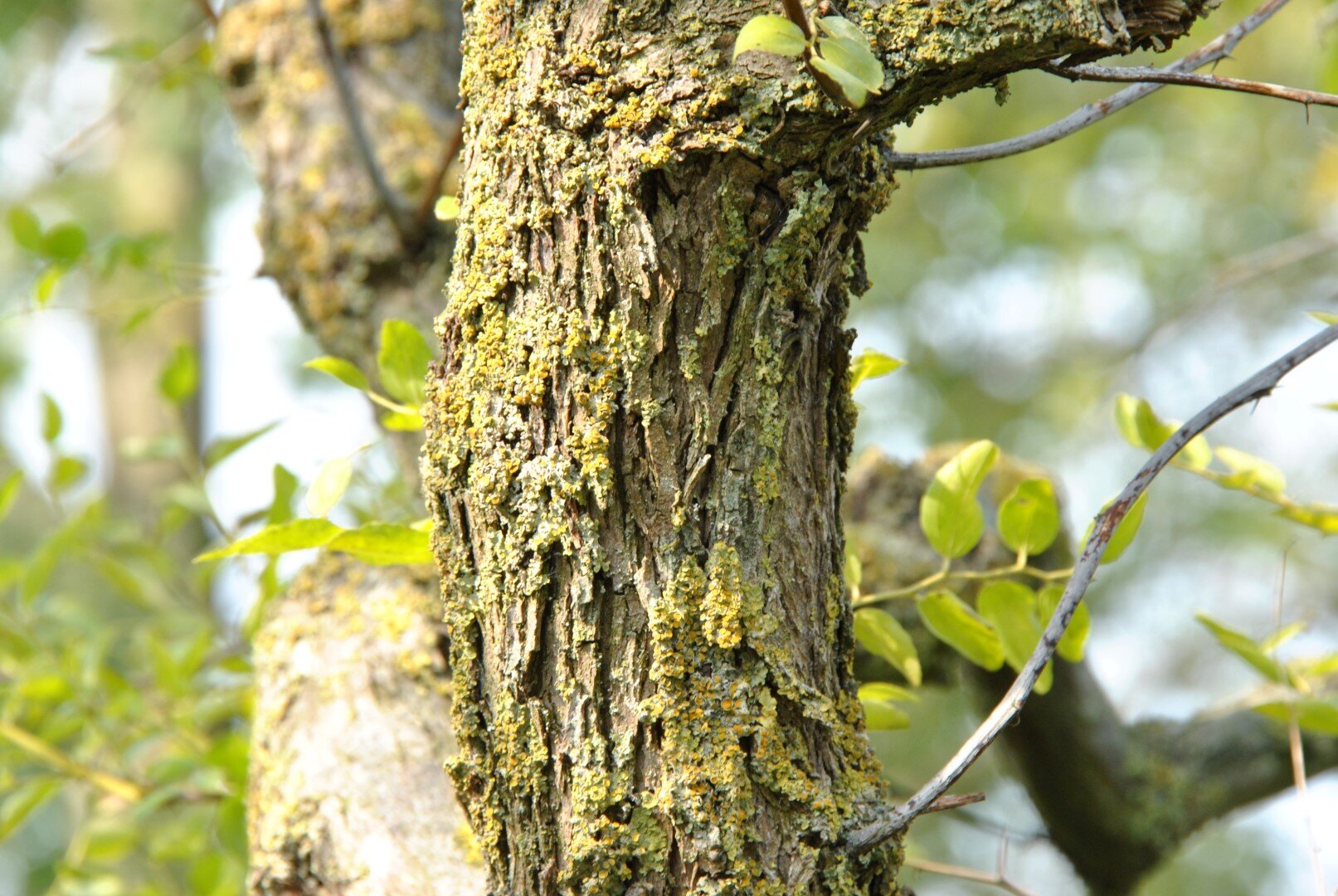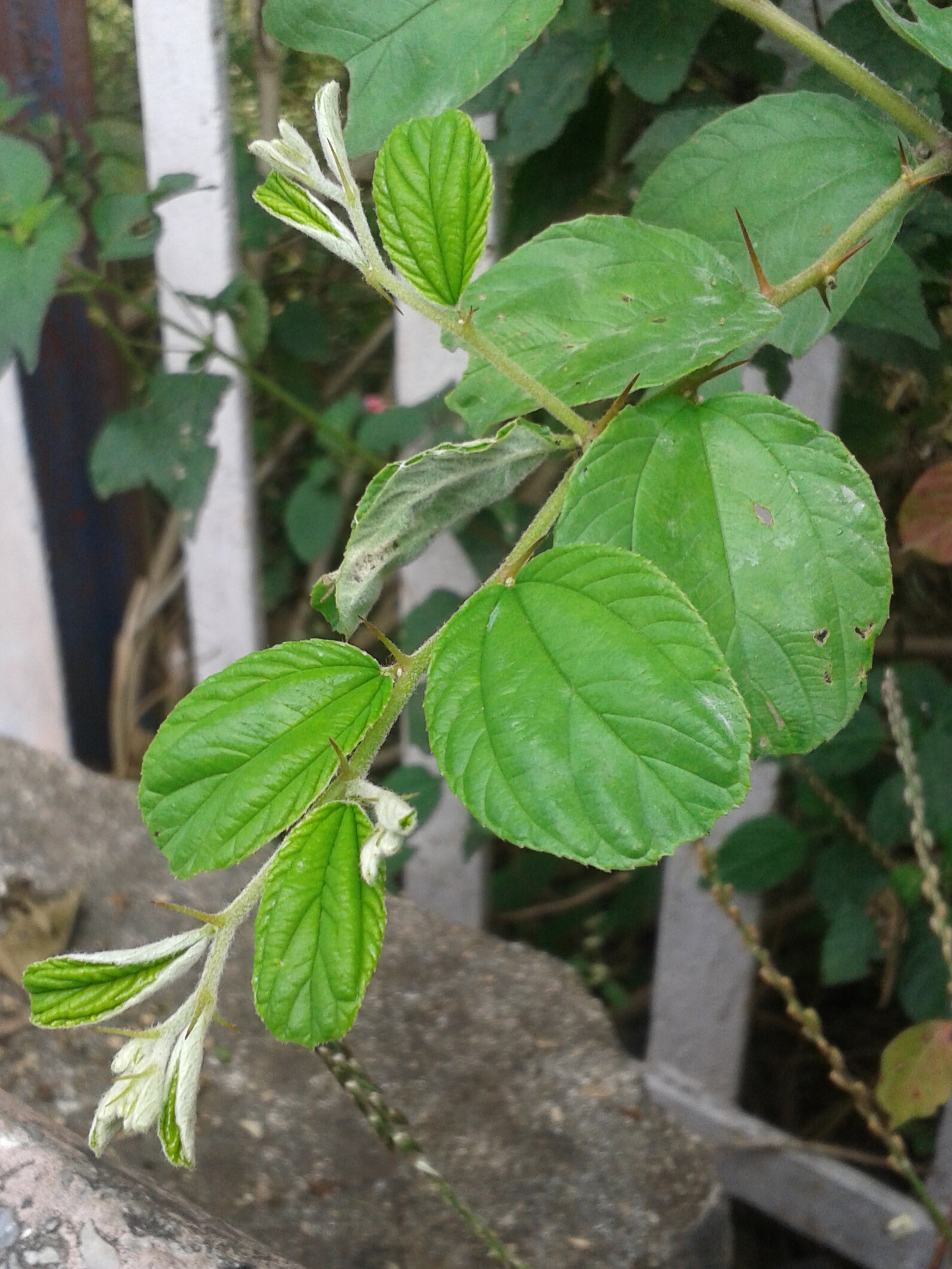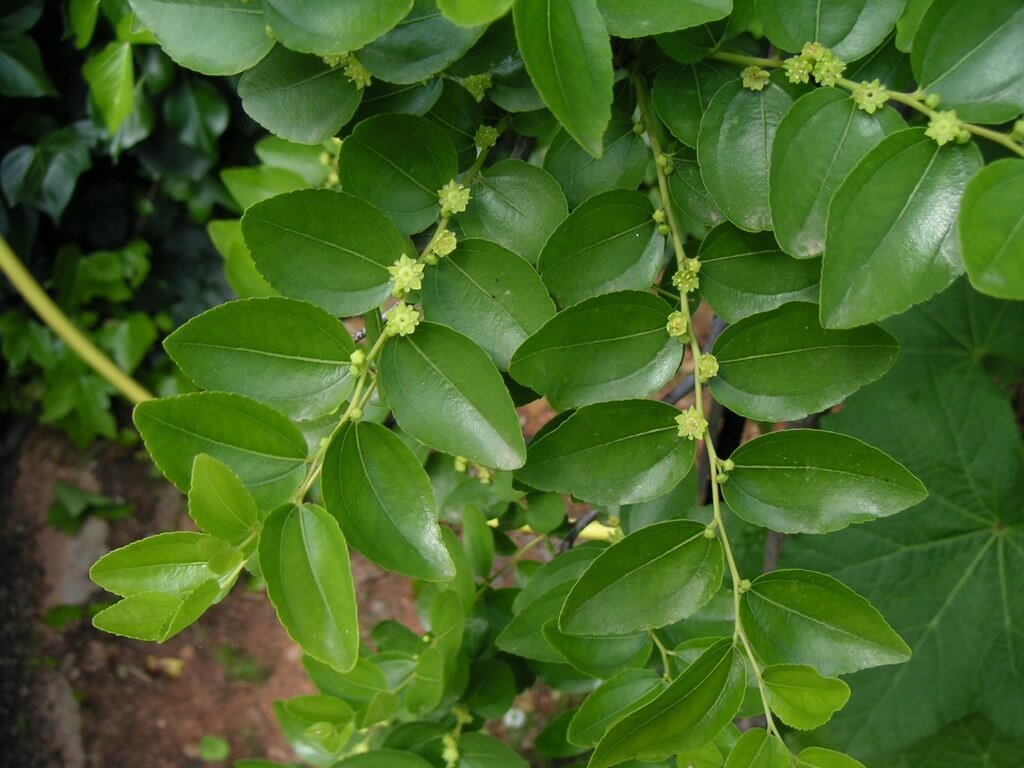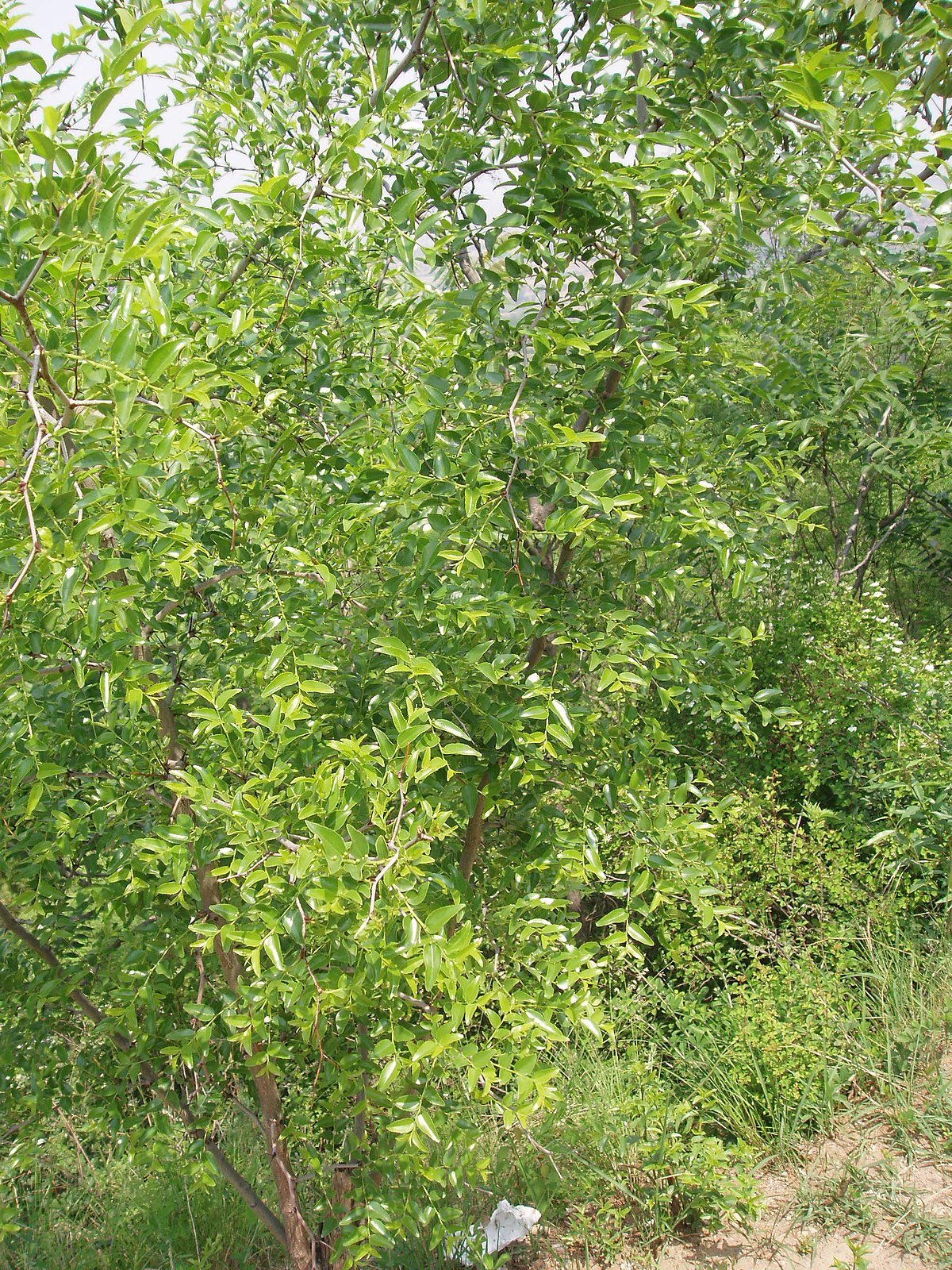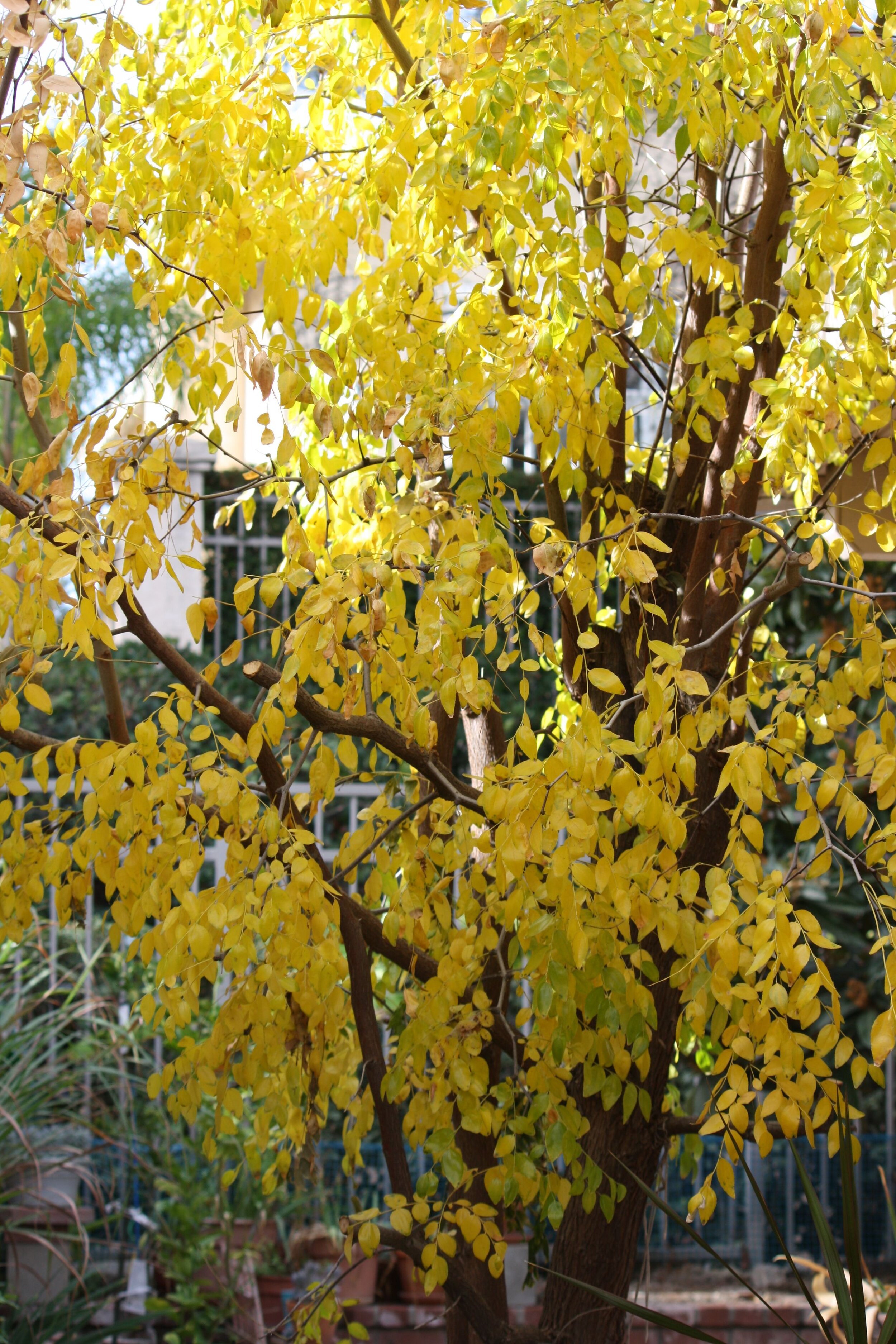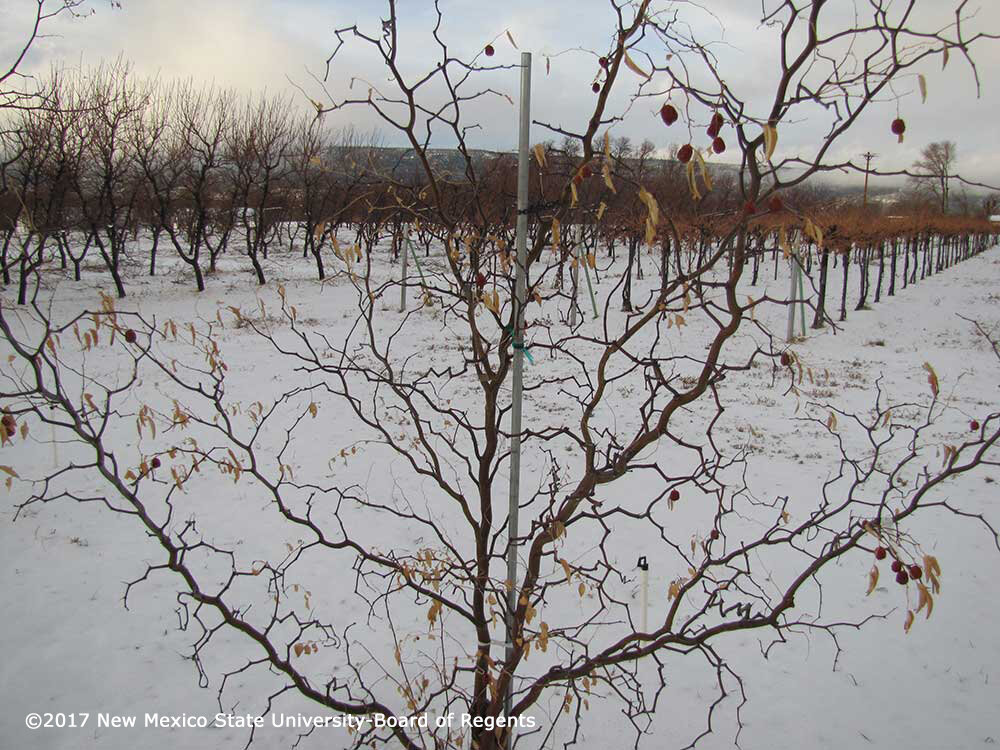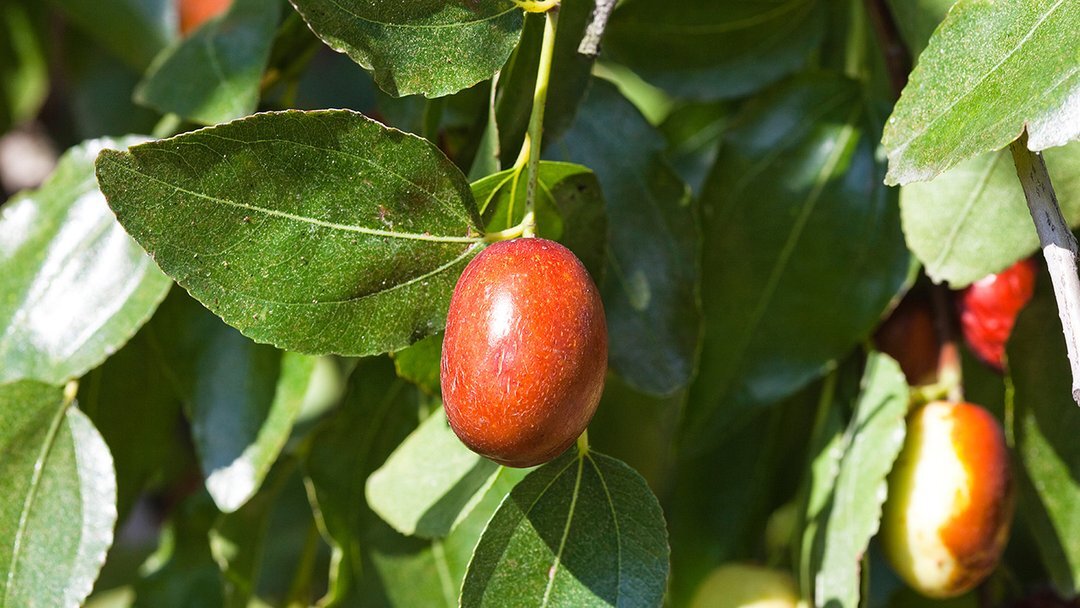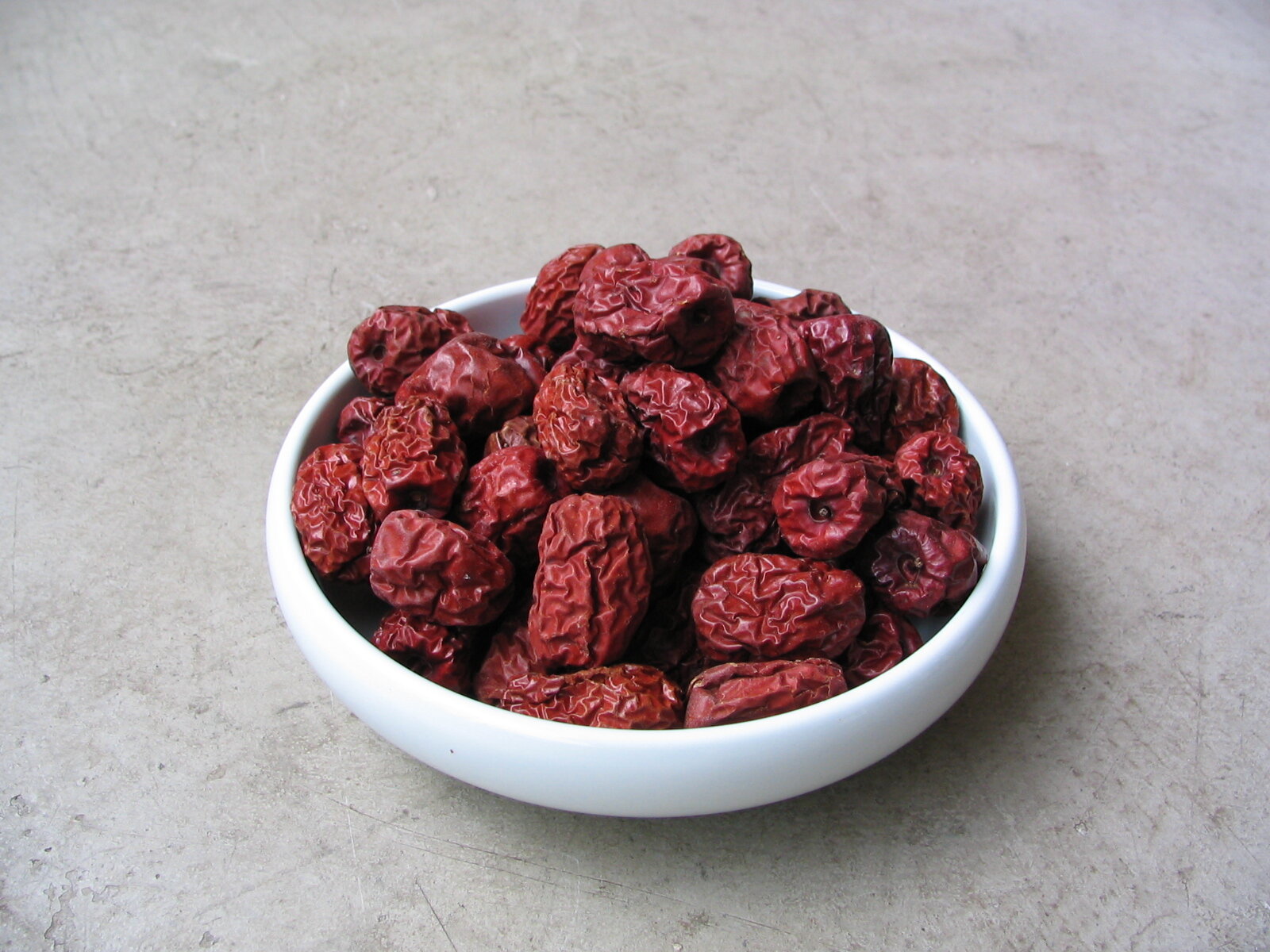Not many of us have the space or sun/shade conditions for a real orchard. But even if you don’t actually plant an orchard, fruit trees can fit into a plan for a back yard garden.
Qualities for Backyard Orchard Trees
Mature size – they should be either shrubs or small trees so as to not end up shading out the garden
Easy to maintain – this includes pest and disease resistance, as well as requiring as little intricate pruning as possible. No requirement for pesticides.
Not too fussy about soil type
At least some of them able to tolerate a bit of shade
Cold-hardy yet not requiring more chill-hours than we have at this point in the climate change process (we’re Zone 7b now). Tolerant of summer heat.
At least some of them native if possible
Self-fertile if possible
Having as much ornamental value as possible, including spring blooms and beautiful fall color
Suited to a “hedgerow” look at the back and sides of the vegetable garden, rather than a more formally laid-out orchard
(Add to these requirements that the trees should be deer-resistant if that is an issue.)
Corneliancherry dogwood (Cornus mas)
Cornus mas in bloom early spring
Corneliancherry is one of the earliest small trees to bloom in the spring – often even before the first day of spring. Its yellow flowers and strong branching habit add excellent ornamental interest. The yellow blossoms are small but borne in such profusion that the tree appears swathed in a yellow veil. The blossoms last for weeks and do not seem to be harmed by frosts. Those blossoms are followed by satiny green leaves that turn mahogany red in fall. In winter, the bark flakes off in eye-catching, muted shades of tan and gray. It can tolerate partial shade, and is a small tree, growing to 10 – 15 ft tall.
The fruit ripen from midsummer onward and are generally cherry size and fire-engine red with a single pit, just like real cherries. Though tart when just ripe, they mellow in flavor after a few days either on or off the tree. Fruit is suitable for jellies, preserves, and making wine. For proper pollination, two or more should be planted.
American persimmon ‘Meader’ (Diospyros virginiana)
American persimmon is a deciduous, native tree with a rounded oval crown that grows to about 20 ft tall and 15 ft wide. It is one of the easiest trees to identify in winter because of its distinctive thick, dark gray bark that is broken into rectangular blocks.
American persimmon is gorgeous in autumn!
It blooms in May-June with fragrant white to greenish-yellow flowers. It tolerates full sun to part shade, and is drought tolerant once established. ‘Meader’ is a self-fertile cultivar with superior ornamental qualities. Its dark green foliage is attractive throughout the growing season before turning excellent shades of red and yellow in fall. The edible, apricot-sized fruit (to 2” diameter) ripens in fall to an orange to reddish-purple color, and may persist on the tree into winter. Persimmon fruit is quite astringent when green, but upon ripening becomes sweet and may be eaten off the tree. Fruits are commonly used in syrups, jellies, ice creams or pies. Persimmon leaves can be used to make teas. Persimmon is a member of the ebony family.
Pawpaw (Asimina triloba)
Pawpaw is native to North America, growing wild in much of the eastern and Midwest portions of the United States. The foliage is the sole food source for the Zebra Swallowtail Caterpillar, and the butterflies are attracted to pawpaw trees as a result. Deer, on the other hand, are not interested in eating the leaves of pawpaw trees. The trees produce tropical-like fruit with unique and delicious taste said to be like a mix between a banana and a pear, with a hint of vanilla. Because Pawpaw requires cross-pollination, more than one variety needs to be planted.
Pawpaw fruit helped sustain Native Americans and early American settlers in times of harvest failure. They need little maintenance in order to survive in the wild, unlike apple, pear, or peach trees. Thanks to its resilience, Native Americans and early pioneers enjoyed pawpaw fruit as a dependable source of fiber and nourishment. Even members of the Lewis and Clarke Expedition survived on pawpaw fruit during their long journey west in 1804-1806.
Pawpaw seedlings
When Pawpaws first became a bit more broadly available in the Nursery trade, there were not “named varieties”, so the only thing to do was to buy a number of seedlings, plant them all, and see which had the best fruits. At this point, though, cultivars can be purchased with “known” fruit properties.
Wells Pawpaw: Delectably fruity, banana-like flavor. Pyramid-shaped tree provides ornamental beauty with unique dark-purple flowers in spring and tropical-looking foliage through fall. Fruit has green skin with a slightly orange flesh and a creamy custard texture. High in protein, vitamins, and minerals. This tree prefers partial shade. Fruit ripens in September. Grafted. For proper pollination, plant another pawpaw variety. It takes about 3 – 5 years to bear fruit.
Sunflower Pawpaw: Delicious 3-6" fruits. This reliable and productive variety offers pawpaws with greenish yellow skin, buttery flesh and only a few seeds. Fruit has a creamy, banana custard flavor. Tree bears in just 2-3 years! Fruit ripens in late September to early October. Grafted. For proper pollination, plant another grafted pawpaw variety.
Asimina trilby has distinctive, large leaves that look almost tropical, and a distinctive habit as well.
Medlar (Mespilis germanica)
What is a medlar, you ask? Mespilus germanica is a small deciduous tree and member of the rose family. The fruit is smallish, ranging from about 1 to 2 inches in diameter, and ranging in color from rosy rust to dusty brown.
Mesphilus fruit looks like rose hips
Medlars are native to Southwestern Asia and Southeastern Europe. They were enjoyed by the Greeks and Romans, doted on by Victorians and mentioned by Shakespeare. They’re almost unknown in the U.S. today. They bear unusual fruits that have to be eaten when “almost rotten”–a process properly called “bletting”. But there is a difference between rotting (which makes a fruit unpalatable) and "bletting", the softening process which turns a medlar's tartness to sugars. The flesh becomes a creamy (albeit brown) puree. When they’re ready to eat, they’re brown, squishy, a little wrinkly. (Not too attractive). Because medlars have to be eaten when bletted, they either have to be eaten right off the tree, or they have to be picked early, then put aside for a few weeks to blet. Then, when they’re finally bletted, they should be eaten immediately.
The fruit is sweet, slightly citrus, with overtones of stewed apples. People describe them as being delicious - holding delicate notes of cinnamon, vanilla, cider, or wine.
The tree is self-fertile, so you only need one, and is particularly free of pests and diseases. Once the formative shape has been created in its first years, regular pruning is not needed.
Flowers …
… and fruit
The medlar tree has a lovely spreading, almost weeping habit and grows to about 15 ft tall. Medlars will do well in most soils, so long as they're not badly drained. Strong winds can damage the flowers, so it's best to ensure they're not too exposed. They will tolerate partial shade – can still produce fruit in an overshadowed, east-facing bed that only receives sun for a couple of hours a day.
Medlar habit with spring flowers
Medlar fall color with maturing fruit
Here’s what one medlar enthusiast says about eating them:
“What you definitely don't get is a lot to eat from each medlar (they contain several fairly chunky seeds) and my favorite way is to eat them is to scoop the flesh straight from the fruit with a teaspoon. It makes a delicacy with wine, port or cheese. … Adding it to breakfast yogurt is something of a treat. Medlars are probably best known, however, for being made into a jelly or cheese, when the fruits are stewed whole and passed through a sieve. You'll need a fair number to make more than a small jarful, but the fun will be in getting your friends to guess what it is.”
Jujube (Zizyphus jujuba)
Jujube, also know as Chinese date, is native to China and has been grown and enjoyed for over 4,000 years. They are interesting trees with spiny, gnarled branches and an open, irregular form. The mottled bark is rough and shaggy. Glossy green leaves turn yellow in the autumn. Jujube grows in a wide range of soil types and pH ranges, but good drainage is required. Once established, they are drought resistant and virtually pest and disease free. Jujube has a moderate growth rate reaching about 20 ft tall and 15 ft wide at maturity; it can also easily be pruned to maintain a more compact habit. Hardy in Zones 6 – 10.
Jujubes require only 200 to 400 hours of winter chilling (hours below 45 degrees) to fruit. Once established, jujubes need a total of only 20 inches of water a year for good fruiting. Jujubes do not tolerate shade well. They prefer full sun but need little fertilizer. However, the fruit and foliage may be eaten by deer.
Jujubes, which are self-fertile, are very productive and early bearing. Eaten either fresh or dried like dates, the fruits are quite sweet. Even young, two-year-old trees are able to produce these delectable treats but be forewarned that these fruits can create quite a litter problem. Locate the tree so the fruit drops in a mulch bed or on the lawn, not on a sidewalk, patio or driveway.
In June (after the threat of a late frost), small clusters of whitish-yellow fragrant blossoms appear (they smell like grape soda), hidden in foliage between the leaf and stems. The one-inch-long green fruits ripen to dark red and finally black. The fruit needs hot summers to ripen well. There are three color stages of fruit development: the green stage when they are growing, the yellow-green stage when they start to ripen and the red-brown stage of full ripe fruit. Jujubes can be eaten at the “crisp mature” stage when the fruit is full size and skin has changed color to partially reddish-brown. At this stage, the flesh is still crisp and is very sweet. Alternatively, the fruit can be eaten at the “fully mature” stage, after the skin color changes to fully red and is wrinkled. At this stage, the flesh is very sweet but drier – like a date.
Though jujubes had been brought to the US from Europe, they were not considered to be very good. “Improved” Jujube varieties were discovered in China and brought into the United States by USDA discoverer Frank Meyer in 1908. The USDA propagated several varieties, including better varieties for fresh use: 'Honey Jar,' 'Sugar Cane,' 'Li,' and 'Shanxi Li' –these ripen in early September.
Jujubes taste like a very sweet apple when eaten fresh; when dried, jujubes truly taste like a date. The fruit, when processed into jujube butter, was rated better than apple butter by the people at Texas A&M, some years ago.


